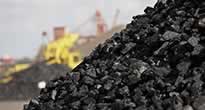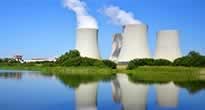EVA has released its latest assessment on the performance of the U.S. power grid during the January 2025 Polar Vortex, an event that pushed electricity demand to unprecedented levels across multiple regions. As record-low temperatures gripped much of the country, the demand for electricity surged to historic highs, testing the reliability and resilience of the nation’s power supply systems.
EVA’s comprehensive analysis underscores the critical role of dispatchable power generation—particularly coal and natural gas—in maintaining grid stability during the multi-day extreme cold weather event. Drawing from extensive regional operations data and fuel-type performance metrics, the report provides key insights into how different market segments responded to the crisis.
Key Highlights from the Report:
- Unprecedented Demand: Electricity demand across the combined territories of SPP, ERCOT, MISO, PJM, the Southeast, and the Northeast reached 537 GW on January 21, 2025—marking the highest demand ever recorded and approximately 150 GW above average winter levels.
- Coal’s Essential Contribution: Coal-fired generation played a vital role during the event. Capacity factors soared above 80% nationally, and in some regions, coal accounted for up to one-fourth of total generation during peak hours. This was particularly important as wind and solar output declined due to adverse weather.
- Natural Gas and Oil-Fired Generation Ramped Up: Natural gas units delivered a significant portion of the increased load, despite fuel price volatility. Oil-fired generation—typically a marginal resource—was also deployed to bridge critical shortfalls, especially in the Northeast.
- Mitigating Price Volatility in PJM: In PJM, coal’s steady fuel cost (~$2.50/MMBtu) provided a buffer against natural gas price spikes, which surged to nearly $30/MMBtu. Without coal, EVA estimates day-ahead power prices could have reached $400–$650/MWh, compared to the actual peak of $225/MWh—potentially saving consumers between $500 million and $1.4 billion.
- Regional Resilience: The Southeast, MISO, and SPP regions also saw record-setting demand levels. Fossil generation, supported by hydro and net imports, met the majority of the incremental demand. Notably, solar and wind generation underperformed across most regions during peak hours due to limited solar irradiation and wind variability.
EVA’s findings reaffirm the importance of maintaining a balanced generation portfolio that includes reliable, dispatchable assets. As extreme weather events become more frequent and severe, preserving resource diversity will be essential to ensuring energy security and economic stability for U.S. electricity consumers.
Please find the full report here. For more information regarding the report, please visit EVA’s website or contact us at 703-276-8900.
About Energy Ventures Analysis: Energy Ventures Analysis (EVA) is a leading provider of consulting and analytical services for the energy industry. With decades of experience, EVA delivers in-depth market analysis, strategic insights, and expert advice to support decision-making in the energy sector.







